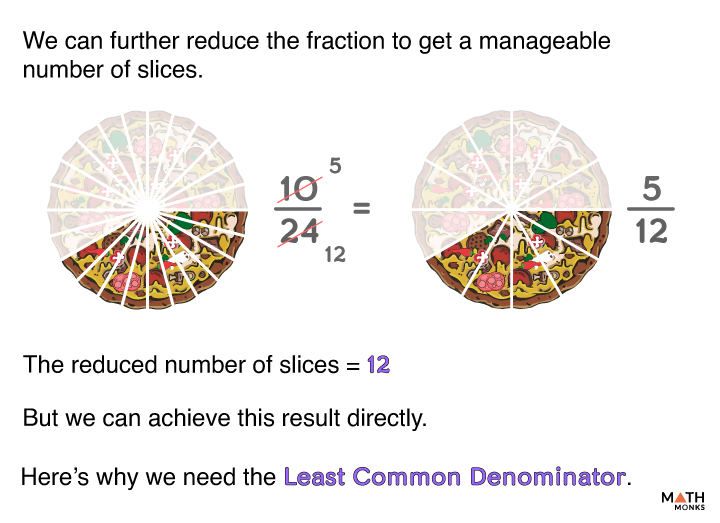
The Art of the Dead Ball: Unpacking the Best Set-Piece Takers of 2025
In the intricate ballet of modern football, where tactical nuances and physical prowess often dominate discourse, the humble set-piece remains a potent, often decisive, weapon. From the perfectly curled free-kick that kisses the crossbar on its way in, to the inswinging corner that finds a towering header, dead-ball situations offer an invaluable shortcut to goal-scoring opportunities. As we cast our gaze forward to 2025, the landscape of football will have subtly shifted, but the fundamental importance of a masterful set-piece taker will remain paramount.
This article delves into the players poised to be the crème de la crème of set-piece specialists by 2025, examining the blend of technique, temperament, and tactical intelligence that elevates them above their peers. We will explore the different facets of set-piece artistry – direct free-kicks, indirect free-kicks, corners, and penalties – and identify the individuals who will define excellence in each domain.
The Anatomy of a Masterful Set-Piece
Before spotlighting the players, it’s crucial to understand what constitutes an elite set-piece. It’s rarely about brute force; rather, it’s a symphony of precision, spin, trajectory, and often, deception.
-
Direct Free-Kicks: The most glamorous of all set-pieces, a direct free-kick requires a unique combination of power, accuracy, and often, an understanding of physics. Players might opt for a "knuckleball" that dips and swerves unpredictably, a precise curl over or around the wall, or a powerful drive that relies on sheer pace. The ability to read the goalkeeper’s positioning and the wall’s setup is paramount.
-
Indirect Free-Kicks & Corners: These require vision, pinpoint delivery, and an understanding of teammates’ runs. Whether it’s an inswinging corner that targets the near post, an outswinging delivery for a back-post header, or a short, intricate routine, the taker must place the ball precisely where it can be met with maximum impact. The ability to vary the delivery – high, low, fast, slow, with different spins – keeps defenders guessing.
-
Penalties: Often seen as a test of nerve, a penalty is arguably the most high-pressure moment in football. While technique is important (power, placement, disguise), psychological fortitude is the ultimate differentiator. The best penalty takers combine a consistent, repeatable technique with the composure to execute under immense pressure, often reading the goalkeeper’s movements or forcing them into a premature dive.
The Elite Class of 2025: Who Will Reign Supreme?
By 2025, many of the current generation’s stalwarts will still be operating at the highest level, their experience and refined technique making them invaluable. Alongside them, a new wave of talent will have fully blossomed, ready to etch their names into the annals of set-piece mastery.
1. James Ward-Prowse (England) – The Free-Kick Architect
Even in 2025, it’s hard to imagine anyone usurping James Ward-Prowse as the undisputed king of direct free-kicks. Having already surpassed David Beckham’s Premier League record for free-kick goals, his technique is a masterclass in consistency and precision. By 2025, at 30 years old, he will be at the absolute peak of his physical and technical prowess, having perfected his craft over more than a decade at the top level.
His method is repeatable: a specific run-up, a clean strike through the ball with his laces or instep, and an innate understanding of how to generate dip and swerve. He can bend it over the wall, drill it low into a corner, or even attempt a knuckleball. His ability to hit the target from almost any angle within 30 yards is unparalleled, making him a perpetual threat and a crucial asset for any team. His influence extends beyond just scoring; his free-kicks force opponents to concede fewer fouls in dangerous areas, knowing the almost inevitable consequences.
2. Kevin De Bruyne (Belgium) – The Maestro of Delivery
While not primarily known for direct free-kick goals, Kevin De Bruyne’s genius lies in his unparalleled delivery from indirect free-kicks and corners. By 2025, the Belgian midfielder, though approaching his mid-30s, will still possess the vision and technique that makes him arguably the best passer in world football. His ability to whip in crosses with incredible pace, dip, and accuracy from wide areas is unmatched.
His corners are a nightmare for defenders, whether he’s swinging them in towards the near post for a flick-on, or delivering a pinpoint cross to the back post. His free-kicks from deeper positions are equally devastating, often finding a teammate with laser precision. De Bruyne’s understanding of space and his teammates’ runs means his set-pieces are not just crosses, but perfectly weighted assists waiting to happen. His tactical intelligence allows him to vary his deliveries, keeping opponents constantly on edge.
3. Bruno Fernandes (Portugal) – The Penalty King & All-Round Threat
Bruno Fernandes will remain a formidable set-piece specialist in 2025. While his direct free-kick success rate can be streaky, his sheer volume of attempts and his ability to score spectacular goals means he’s always a threat. However, it’s his prowess from the penalty spot that truly sets him apart.
By 2025, Fernandes will likely still be one of the most reliable penalty takers in the game. His technique involves a characteristic hop and a keen eye for goalkeeper movement, often sending the keeper the wrong way or burying the ball with power into the top corner. His nerveless execution under pressure, even after multiple attempts in a game, speaks volumes about his mental fortitude. Beyond penalties, his corners and indirect free-kicks are delivered with pace and purpose, often aiming for direct goal-scoring opportunities or creating chaos in the box.
4. Lionel Messi (Argentina) – The Ageless Artisan (If Still Playing)
This is a speculative inclusion for 2025, but if Lionel Messi is still gracing the pitch, even in a more limited capacity, his free-kick artistry will remain legendary. By 2025, at 38, he might be playing in a less demanding league, but his technique, honed over decades, is eternal. His ability to curl the ball with exquisite precision, often over a wall and into the top corner, is a testament to his unique understanding of the ball’s trajectory.
Messi’s free-kicks are not about power; they are about placement, spin, and an almost telepathic connection with the goal. He can make the ball dance in the air, leaving goalkeepers stranded. While his overall minutes might decrease, his presence on the pitch for any set-piece in a dangerous area would still strike fear into opponents, making him an invaluable, albeit perhaps less frequent, set-piece threat.
5. Joshua Kimmich (Germany) – The Deep-Lying Creator
Joshua Kimmich’s influence extends far beyond his defensive midfield role; his set-piece delivery is a crucial component of Bayern Munich and Germany’s attacking arsenal. By 2025, Kimmich will be 30, likely at the peak of his powers as a world-class midfielder, and his set-piece taking will be as refined as ever.
His corners are consistently dangerous, delivered with pace and accuracy, whether inswinging or outswinging. His indirect free-kicks from deep are often played with the precision of a quarterback, finding teammates in dangerous areas or creating second-ball opportunities. Kimmich’s tactical intelligence means his set-pieces are often part of pre-planned routines, maximizing the chances of a goal. His ability to deliver with both feet makes him even more versatile.
6. Florian Wirtz (Germany) – The Ascending Talent
By 2025, Florian Wirtz will have cemented his place as one of the world’s elite attacking midfielders. His vision, close control, and passing range are exceptional, qualities that translate directly into set-piece prowess. At 22, he will have matured significantly, potentially taking on more responsibility for dead-ball situations for club and country.
Wirtz has already shown flashes of brilliance with his free-kick taking and corner delivery. His technique allows him to curl the ball with pace and precision, and his footballing IQ means he can execute complex set-piece routines. As he gains more experience and confidence, Wirtz could easily become a primary set-piece taker, challenging the established names with his youthful exuberance and refined skill set.
7. Jude Bellingham (England) – The Emerging All-Rounder
While not a specialist in the mold of Ward-Prowse, Jude Bellingham’s incredible all-round game and leadership qualities suggest he will become a formidable set-piece threat by 2025. His powerful striking, vision, and ability to perform under pressure make him an ideal candidate to take penalties and even some direct free-kicks.
At 21, Bellingham will be a seasoned professional, accustomed to the biggest stages. His power and accuracy from range suggest he has the tools to convert free-kicks. More importantly, his growing influence within his team means he will likely be entrusted with crucial dead-ball situations. His knack for scoring important goals makes him a player who thrives in high-pressure set-piece moments.
Beyond the Kick: Tactical Implications
The presence of a world-class set-piece taker profoundly influences a team’s tactical approach.
- Goal Threat: A specialist can turn any foul within range or any corner into a genuine goal-scoring opportunity, forcing opponents to be disciplined and cautious.
- Psychological Advantage: Opponents know the threat, leading to apprehension and potential mistakes. For the attacking team, it instills confidence.
- Game Management: Set-pieces can be used to relieve pressure, waste time, or even change the momentum of a game.
- Squad Building: Teams actively seek out players with set-piece abilities, recognizing them as force multipliers.
- Training Routines: Coaches dedicate significant time to set-piece routines, maximizing the impact of their specialists.
The Future of Set-Piece Taking
By 2025, data analytics will play an even larger role in set-piece preparation, identifying opponent weaknesses, optimal delivery zones, and the probabilities of different routines. Specialized set-piece coaches will become even more common, focusing solely on refining techniques and devising innovative strategies. The blend of individual brilliance and collective tactical execution will continue to evolve, making the art of the dead ball an ever more fascinating and critical aspect of the beautiful game.
Conclusion
As we look to 2025, the best set-piece takers will continue to be a unique breed of footballer – a blend of artist, scientist, and psychologist. From the unwavering precision of James Ward-Prowse to the visionary deliveries of Kevin De Bruyne, and the emerging brilliance of talents like Florian Wirtz, these players will remind us that sometimes, the most exquisite moments in football arise not from open play, but from a perfectly executed dead ball. Their ability to bend games to their will, to conjure goals from seemingly innocuous situations, will ensure their continued status as indispensable assets in the ever-evolving world of football.



